New Comet Discovered: Lovejoy Will Add to “Comet Lineup” in Winter Skies
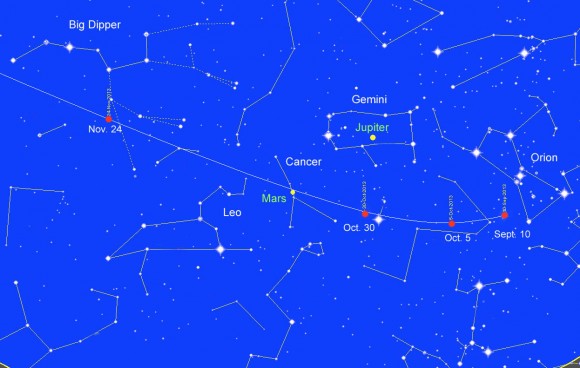
New Comet Lovejoy starts out slow but quickly gains speed as it zips from near Orion in mid-September all the way to Ursa Major in November, when it will be closest to Earth. Planet positions shown for Sept. 10. Created with Chris Marriott’s SkyMap software
This new comet will add to a lineup of comets that should grace early November skies in the northern hemisphere: Comets ISON, Encke and now the new Lovejoy.
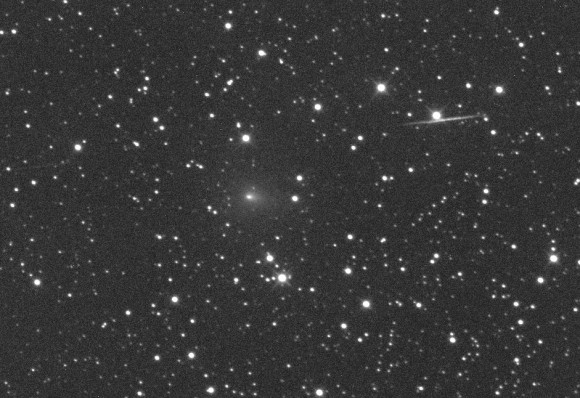
Comet C/2013 R1 Lovejoy photographed on Sept. 10. The comet is visible in larger amateur telescopes in September but may brighten to small scope visibility in November. Streak at right is a geostationary satellite. Credit: Michael Jaeger
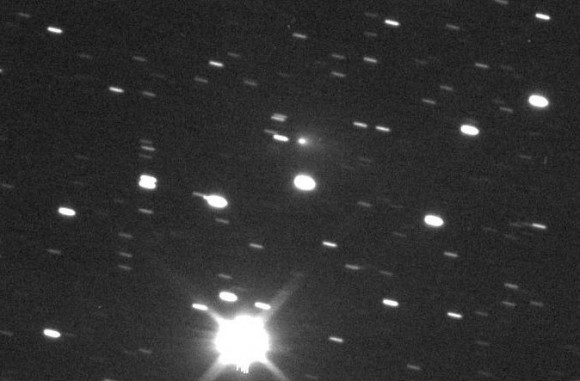
Comet Lovejoy has a small, condensed coma (head) about 30 arc seconds across with a faint, short tail in this photo made on Sept. 8. Credit: Ernesto Guido and Nick Howes
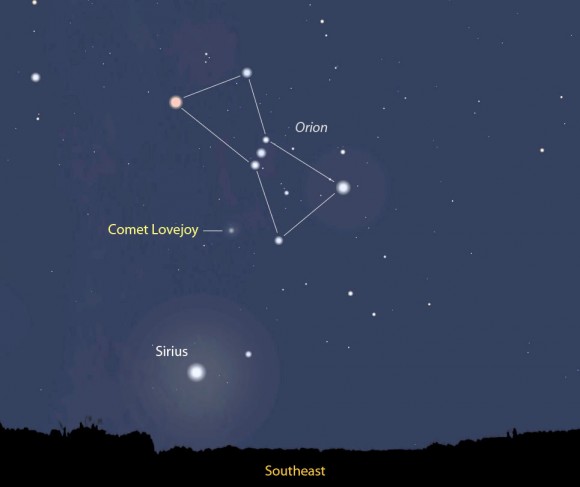
The comet is a faint 14th magnitude object just east of Orion’s Belt in the dim constellation Monoceros the Unicorn. The map shows its position tomorrow morning Sept. 11 just before the start of morning twilight. Stellarium
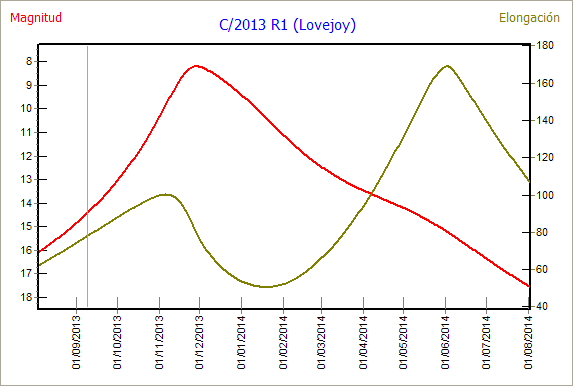
A graph showing the comet’s predicted magnitude (subject to change) in red versus the comet’s elongation or angular distance from the sun. You can see that it will up in a dark sky for a long time including around the time when it’s brightest. Credit: Ernesto Guido & Nick Howes
The charts here give you a general idea of its location and path over the next couple months. As the comet crosses into small-scope territory in early November, I’ll provide maps for you to find it.

A graphic created by Stuart Atkinson showing the comet and planetary lineup that should be in the skies on November 9, 2013.
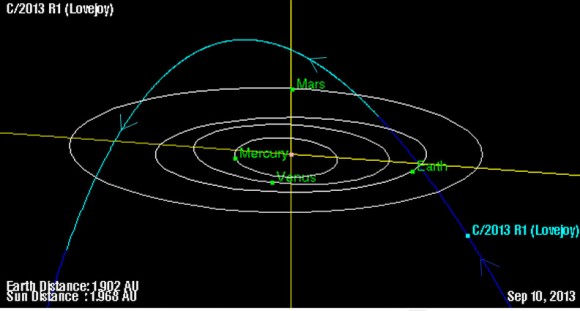
Comet Lovejoy is approaching the plane of the planets from “down under” (lower right). The diagram shows the comet’s position today. Like many comets, Lovejoy’s orbit is steeply inclined – in this case 62 degrees. Credit: NASA







No comments